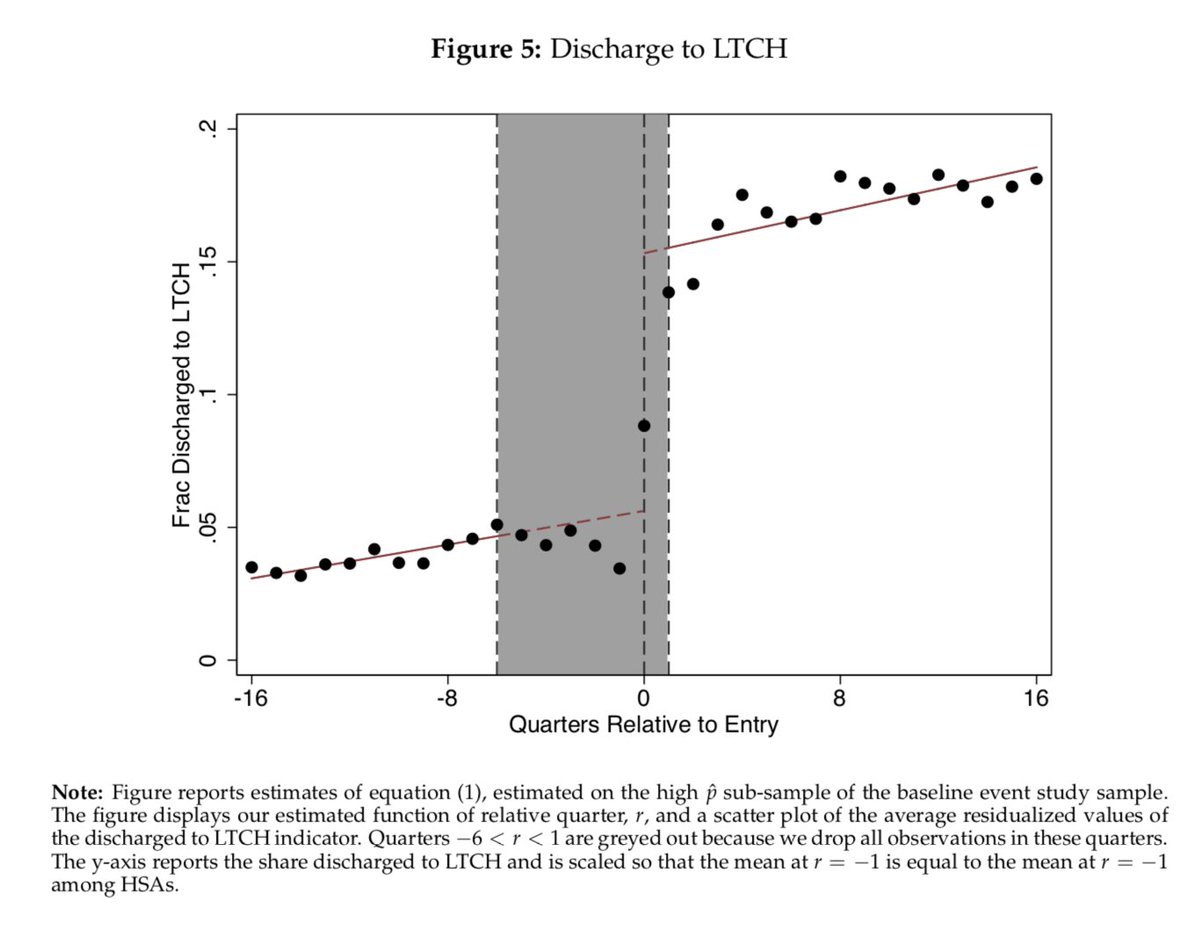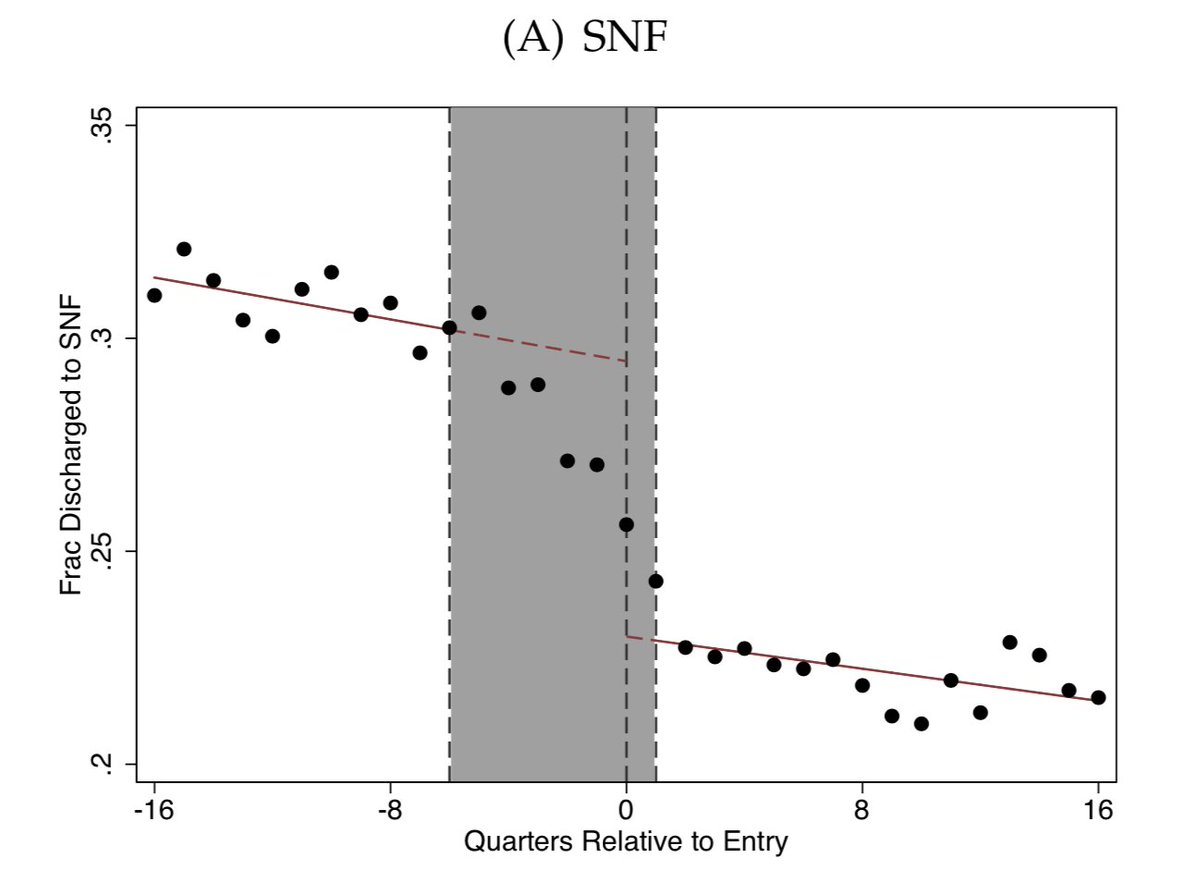Long-Term Care Hospitals: A Case Study in Waste
Me + Liran Einav + Amy Finkelstein
ssrn.com/abstract=32393…
This is my first new working paper thread. Thanks to @nomadj1s, @ProfNoto, @SteveCicala, and many others for inspiration.
\begin{thread}
We identify a specific and substantial source of waste: Long-Term Care Hospitals (LTCHs), a type of post-acute care facility.
A: We find that LTCH entry reduces length of stay at regular hospitals, suggesting that some patients would be kept at regular hospitals if LTCHs didn’t exist
A: Depends on your perspective: For gov’t agency that seeks to improve health at lowest cost, spend is wasteful. From perspective of social planner, some of spend is a transfer and should be considered a rent
A: If a sizeable share of the $4.6 billion in incremental spending are rents, the LTCH industry has strong incentives to lobby against regulatory change, which might explain their continued existence. Stay tuned...
\end{thread}








